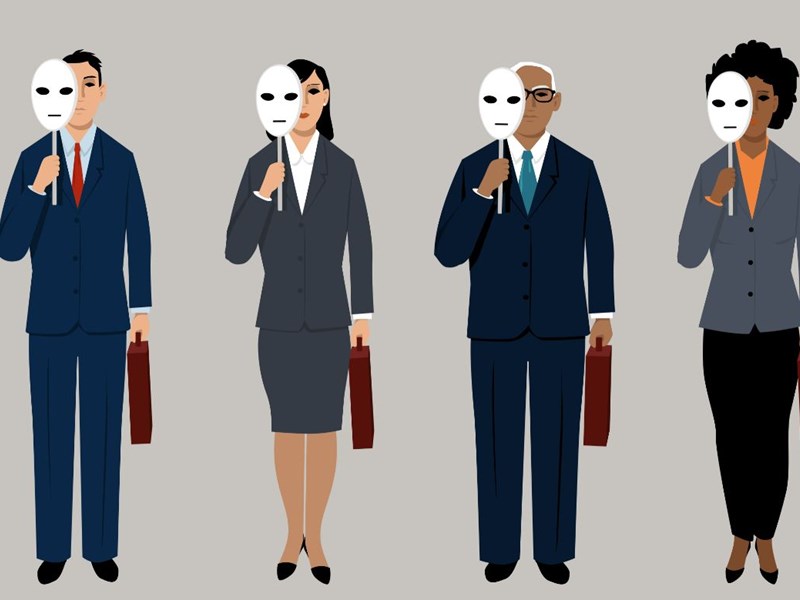Unconscious biases are social stereotypes that we hold about certain groups of people that we are consciously unaware of. These views can be influenced by our background culture, context or personal experiences. It can affect our everyday behaviour and more importantly, our decision making during the different stages of the recruitment process. This has the potential to affect our interview process for instance: any rapport building questions can often lead us to Affinity or Similarity bias where we can show a tendency to favour candidates with similar backgrounds, experiences and interests. The most important thing to remember, especially when hiring, is that these unconscious biases are based on criteria completely irrelevant to the job.
How to spot and remove unconscious bias from your decision making
To put it simply, unconscious bias is costing you money and talent. More and more we have come to understand that humans fall victim to bias in our thinking, actions and behaviours. Biases can develop due to our brains having to process an extraordinary amount of information and to help us process all this information quickly we create mental shortcuts in order to make decisions. Unfortunately, connecting pieces of information together by using these shortcuts can lead to harmful stereotypes when applied to people.
The most common examples of unconscious bias in the workplace are:
Affinity Bias
This is where we tend to prefer or favour individuals who appear similar to ourselves and make connections with people through previous experiences or interests. This can occur more frequently during interviews especially when employers are trying to find a “cultural fit”. An example of this would be to start favouring a person who has similar experiences to you. A method to combat this could be that you take note of all the similarities that you share with the candidate so that you are able to differentiate between attributes that may cloud your judgement.
Gender Bias
Research has shown that hiring preferences are given to white males whereas mothers are often overlooked or penalized. Studies show that even the wording in job descriptions can deter women from applying for jobs that are advertised with ‘masculine-coded language. Gendered language needs to be considered so that your job descriptions are reaching a wider pool of applicants. For example, words that are typically associated with men are strength and leadership whereas women are more likely to be associated with words like nurturing and warm. Bias wording in job descriptions has proven to exist still today and it can change a candidate’s perception about diversity in the workplace. This can lead to diverse candidates avoiding the position, making it hard for talent acquisition teams to support diversity initiative. This is a loss for companies as well since diverse workforces are positively correlated with better financial performance.
Confirmation Bias
This is the tendency to draw conclusions about a person or situation based on your own desires or pre-existing beliefs rather than unbiased merit. This can happen from the very beginning of the recruitment process when you are reviewing a resume and forming an initial opinion of someone based on irrelevant attributes like their name or where they went to school. This can be dangerous leading into an interview as you might find you steer your questions to confirm the initial opinion of the candidate. To combat confirmation bias we need to look at standardized skill-based questions that will display if the candidate is capable of doing the job and will allow the candidate a fair chance to stand out.
The Halo Effect
This is the tendency to put a person on a pedestal after learning something impressive about them. It can cause a halo effect where we hold the candidate in higher regard due to either a trait or experience they possess. The halo effect can come into play at any stage of the recruitment process for example you might come across a candidate that has previously worked at a prestigious company. The halo effect can be blinding when searching through CV’s as you are most likely looking for something unique that will make a candidate stand out from the rest. When you do this make sure you also consider the candidate without that one stand out attributes and see how their experiences, skills and personality would compare to other candidates that might not have had the same privileges or opportunities.
We can remove unconscious bias with training and awareness.
We may not be able to completely remove unconscious bias; however, the first step on the road to reducing it is to admit that we have them. In general, most people would not like to admit that they hold prejudices of any kind however we need to reduce the stigma and raise awareness. People need to realise that these biases are natural and not reflective of discriminatory intent. However raising awareness alone is not enough, training programs need to be provided to highlight the consequences of bias.
Another method to reduce biases would be to standardise interviews. This is the process of having consistency throughout the recruitment process particularly the structure of an interview and can consist of sharing information, delivering feedback, having multiple interviewers and internal communications. This will give the candidates a more consistent and positive experience and enables the employer to make decisions using data-driven results rather than allowing biases to make them for us.
Unconscious bias can often go unnoticed and is hard to penalise as there are many different forms ranging from those listed above as well as others such as ageism and beauty bias. Allowing unconscious bias and negative stereotypes into the recruitment process will likely lead to a lack of diversity in the workforce and can be harmful to the culture of the workplace we are trying to create. We need to stop looking for a cultural “fit” and start aiming for someone who adds to our culture.

